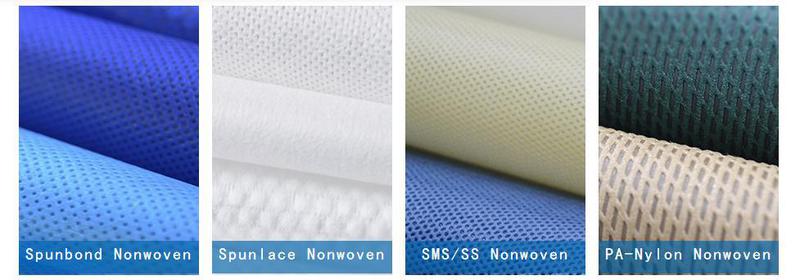How to identify various non-woven materials
1、Feel visual method: this method is suitable for the state of non-woven material is loose fiber.
(1) Cotton fiber is shorter and thinner than ramie fiber and other hemp process fiber and wool fiber, often with various impurities and defects.
(2) Hemp fiber feels rough and hard.
(3) Wool fibers are curly and elastic.
(4) Silk is long silk, long and fine, with a special luster.
(5) Among the chemical fibers, only the dry and wet strength of viscose fiber differs greatly.
(6) Spandex yarn has great elasticity, and its length can be stretched to more than five times at room temperature.

2、microscope observation method: is based on the longitudinal surface of the fiber, section morphological characteristics to identify non-woven fiber.
(1) Cotton fiber: cross-section shape: waist round, middle waist; Longitudinal shape: flat ribbon, natural deflection.
(2) Hemp (ramie, flax, jute) fiber: cross-section shape: waist round or polygonal, with lumen; Longitudinal form: horizontal section, vertical grain.
(3) Wool fiber: cross section shape: round or nearly round, some with medulla; Longitudinal morphology: the surface has scales.
(4) Rabbit hair fiber: cross section shape: dumbbell type, with medulla; Longitudinal morphology: the surface has scales.
(5) Mulberry silk fiber: cross-section shape: irregular triangle; Longitudinal shape: smooth and straight, longitudinal stripes.
(6) Ordinary viscose fiber: cross section shape: zigzag, leather core structure; Longitudinal shape: longitudinal grooves.
(7) Rich fiber: cross section shape: less tooth shape, or round, oval; Longitudinal shape: smooth surface.
(8) Acetate fiber: cross section shape: three-leaf or irregular serrated; Longitudinal shape: the surface has longitudinal stripes.
(9) Acrylic fiber: cross section shape: round, dumbbell shape or leaf shape; Longitudinal shape: the surface is smooth or striped.
(10) PVC fiber: cross-section shape: close to round; Longitudinal shape: smooth surface.
(11) Spandex fiber: cross section shape: irregular shape, round, potato shape; Longitudinal shape: the surface is dark and dark, showing unclear bone - shaped stripes.
(12) Polyester, nylon, polypropylene fiber: cross section shape: round or special-shaped; Longitudinal shape: smooth.
(13) Vinylon fiber: cross-section shape: waist round, skin core structure; Longitudinal shape: 1~2 grooves.
